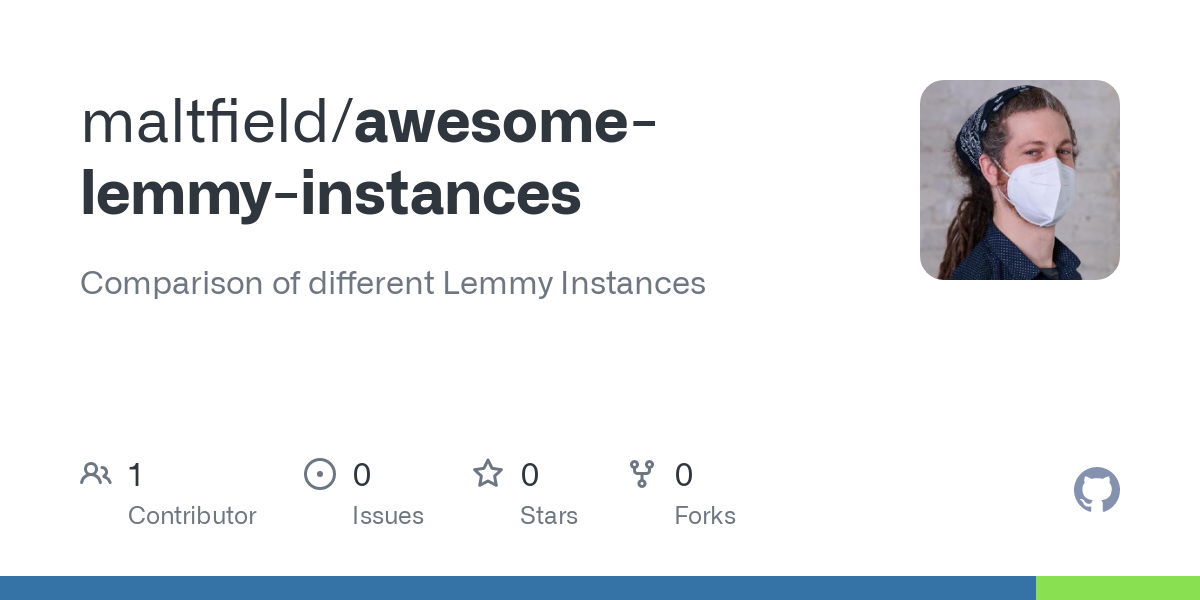I created a repo on GitHub that has a table comparing all the known lemmy instances
Why?
When I joined lemmy, I had to join a few different instances before I realized that:
- Some instances didn’t allow you to create new communities
- Some instances were setup with an
allowlistso that you couldn’t subscribe/participate with communities on (most) other instances - Some instances disabled important features like downvotes
- Some instances have profanity filters or don’t allow NSFW content
I couldn’t find an easy way to see how each instance was configured, so I used lemmy-stats-crawler and GitHub actions to discover all the Lemmy Instances, query their API, and dump the information into a data table for quick at-a-glance comparison.
I hope this helps others with a smooth migration to lemmy. Enjoy :)



Underselling it? 431 currently logged in at time of this comment and it hits 600 concurrently logged in at peak time basically every day. The statistic this repo uses is also:
By that metric I think Hexbear is still the largest lemmy instance. It would be the third on this list if you only count daily concurrent login peak.
Based on data from August 2022 api survey of active users, with active being a user that has commented or posted that hour. with the qualification it will be lower than the user count displayed on the page which are users logged in.
I see, so it’s commenting accounts per hour. Would be interesting to see what the commenting accounts per month is to more accurately compare to this list. Although this list doesn’t make it clear whether they are using accounts that have commented or accounts that have simply participated via logging in and voting, I would personally include any voting account as “active”.
Yeah that makes sense, we will be able to get more up to date information after the relaunch
Only wish we knew what the definition of “active” being used was more clearly.